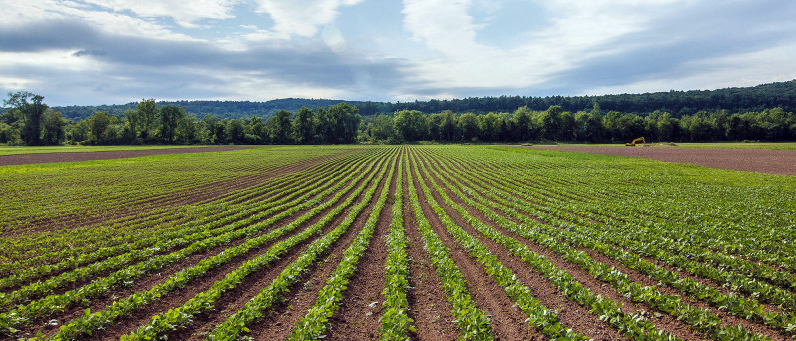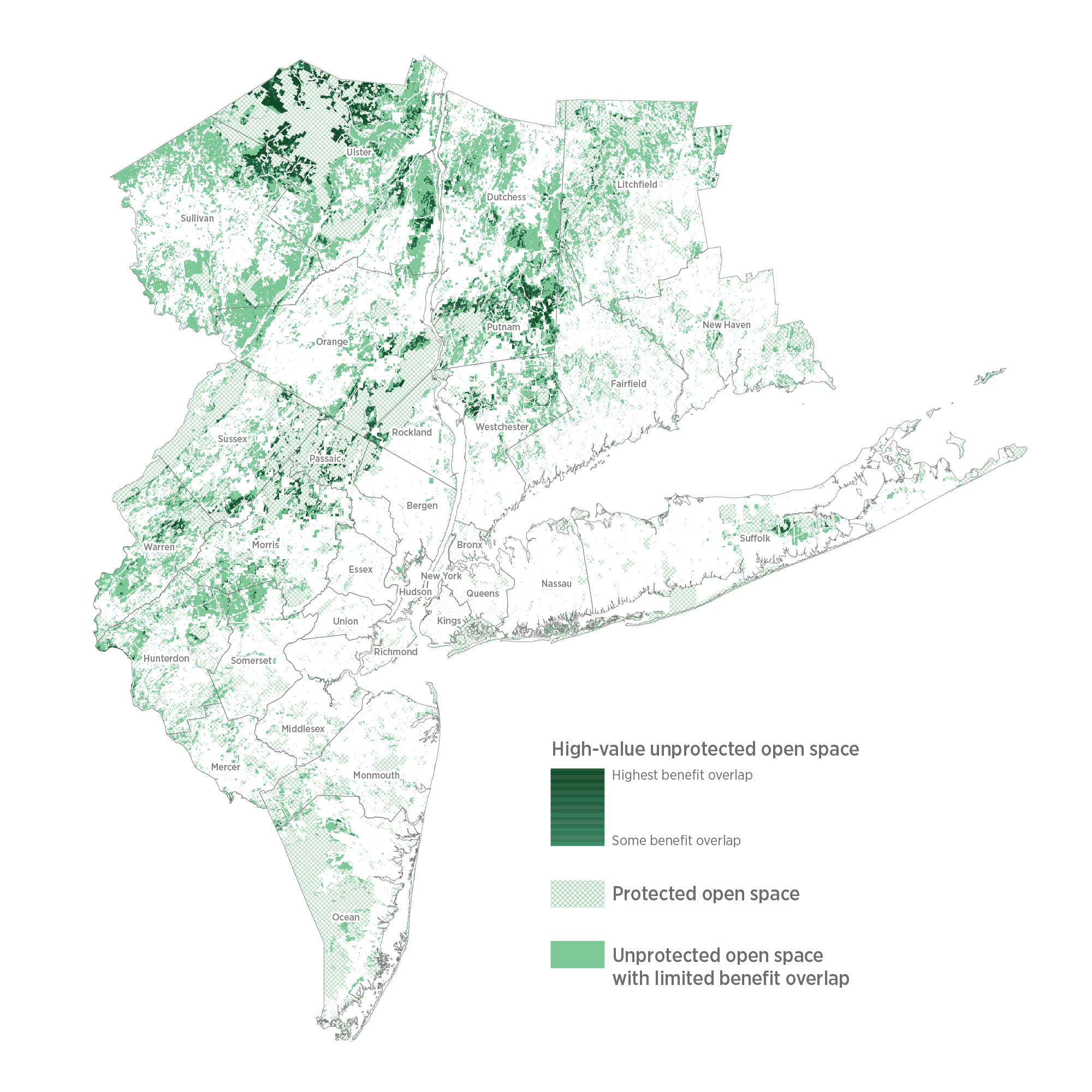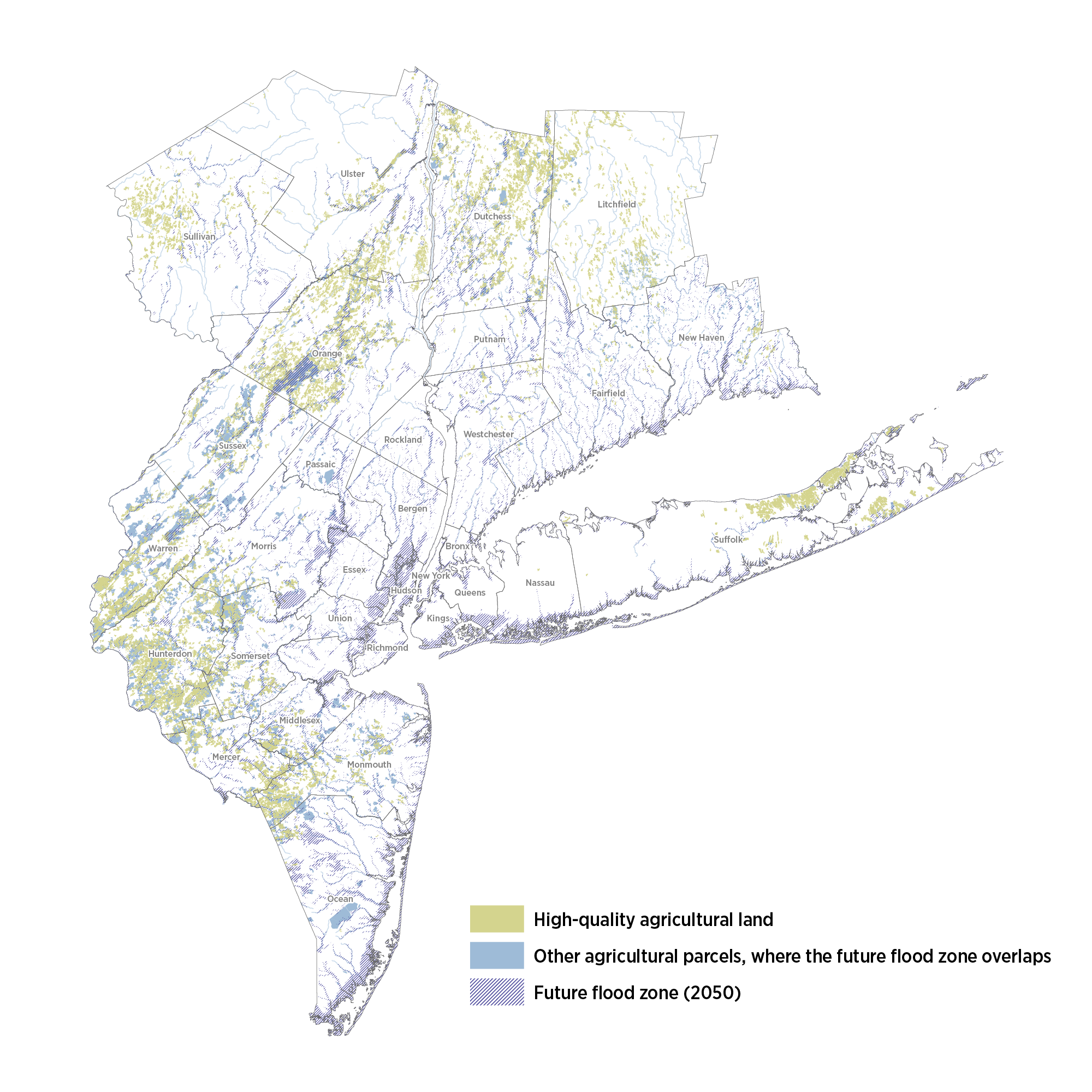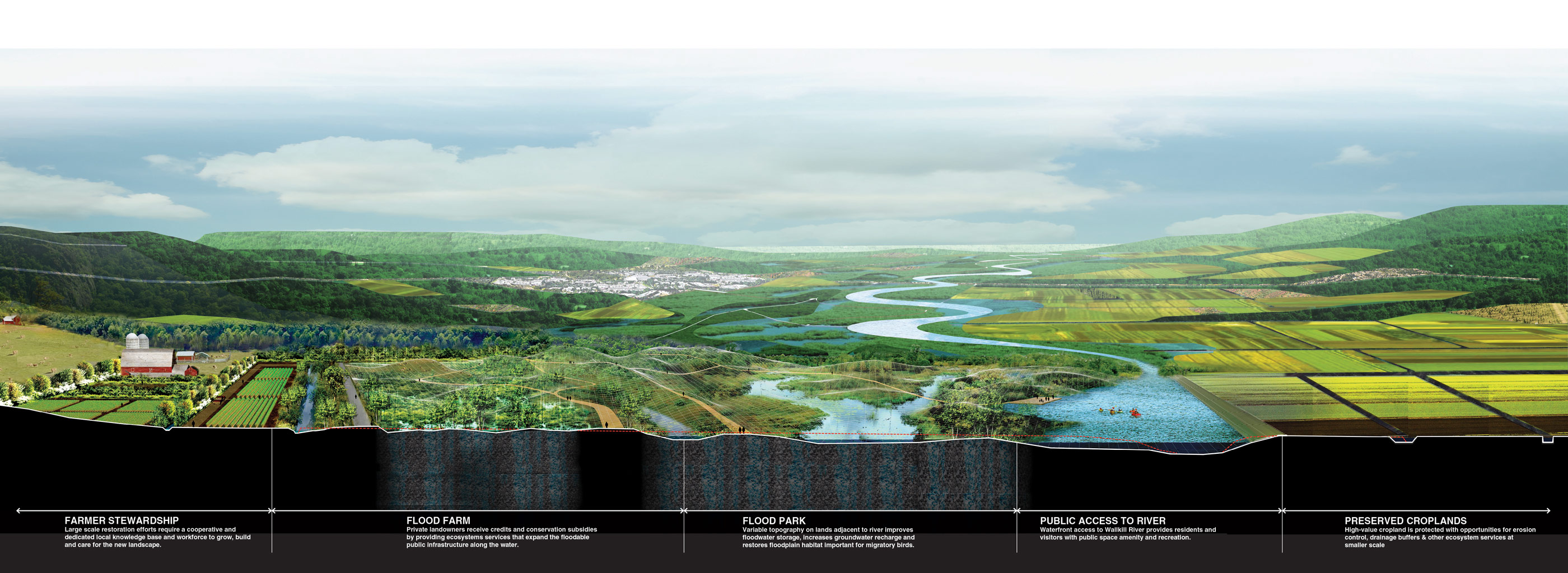
Open spaces and agricultural lands provide tremendous benefits to the region and its residents. They provide us with abundant and clean water, reduce air pollution, and protect a range of habitats for numerous species, as well as providing an opportunity to connect with and experience nature. But in a growing region like ours, these open spaces are at risk. While nearly 70 percent of our region’s land is undeveloped, only 21 percent is permanently protected, leaving too much vulnerable to future development. Many state programs—such as New York’s Environmental Protection Fund, New Jersey’s Green Acres, and Connecticut’s acquisition program, as well as private nonprofit land trusts—have been established to identify and acquire priority parcels for permanent protection, but are woefully underfunded.
In this situation, when demand for funding is high, the current criteria for determining which parcels should be prioritized for acquisition are outdated. They do not reflect the most critical challenges we face in the era of climate change, which brings greater risk of flooding, droughts, and threats to our natural habitat.
State and local governments and land trusts should prioritize the protection of natural and agricultural lands using new criteria that emphasize climate and community benefits
In order to maximize their limited funds, state preservation programs and land trusts should adopt new criteria to identify and prioritize the acquisition of land best suited to protect and mitigate the effects of climate change, particularly in the communities that are most vulnerable. Building on the work done by The Nature Conservancy and Scenic Hudson, these criteria should include:
- Climate mitigation: Because forests have the capacity to store large amounts of carbon, protecting swaths of unprotected forest will help mitigate carbon emissions and slow the pace of climate change while we transition away from greenhouse gas-emitting fuels.
- Flood resilience: Open spaces and agricultural land absorb water. Protecting these spaces in areas that are susceptible to flooding can help reduce damage to our communities. “Flood farms,” an innovative concept advanced by PORT + Range in the fourth plan’s 4C Initiative, are marginal agricultural lands protected and used to absorb riverine or storm floodwaters conveyed to the site. Flood farms could offer a new source of income for farmers on marginal lands, or a reason to prioritize agricultural-land protection.
- Natural species protection: Some land parcels are particularly important for protecting animal species and giving them routes to migrate northward, as the climate warms and ground conditions change.
- Local food production: As farms across the country become increasingly susceptible to drought, it is important to protect the most fertile agricultural land and expand the opportunity to grow more food regionally.
- Community health & well-being: It is critical to protect open spaces that ensure a high-quality drinking-water supply for a growing population. Land that gives the region’s residents access to nature also has important health benefits.
Using the criteria above, RPA identified nearly 237,000 acres of high-priority unprotected open spaces with multiple overlapping benefits.
Increase state funding for open-space-acquisition programs
Each state in the region should increase the funding dedicated to preserving open spaces and agricultural land, and make long-term investments to ensure they are protected. Across the country, such measures enjoy wide support from the public, with many statewide and municipal ballot measures to create new public funds for parks and land conservation having been approved. Once each state has agreed on the prioritization of open spaces and agricultural lands, a bond initiative should be pursued to raise the needed funds.
Pursue broader collaboration between government and community-based groups to protect open spaces and farmland
Preserving farmland requires creativity, perseverance, and greater collaboration between all interested parties. A good model for collaboration to preserve farmland is Scenic Hudson’s Foodshed Conservation Plan, which brings together rural communities dependent on agriculture and city neighborhoods seeking fresh food. The plan rightly calls on federal, state, county, town, village, and New York City participation in the effort.



Outcomes
Paying for it
Over the past 20 years, New York, New Jersey, and Connecticut have spent a combined $1.3 billion of environmental protection and acquisition program funding to protect about 200,000 acres of open space (not including coastal wetlands). Additional funding will be needed to protect high-priority portions of the region’s 3.9 million acres of unprotected open space. In combination with legally and politically appropriate land use regulations, changing the criteria to reflect current priorities around climate change will allow funding to have a greater impact. The Nature Conservancy, Scenic Hudson, RPA, and others have developed different models that can be expanded and improved.